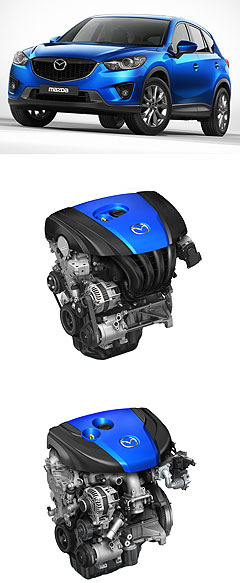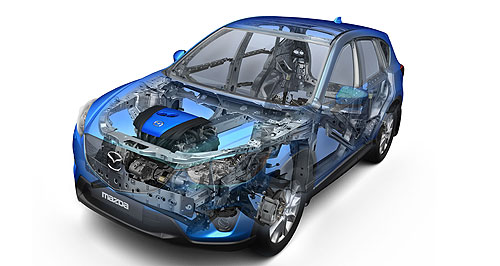News - MazdaMazda in no rush for costly solutionsIt's a steel: Mazda is focussing on light-weight steel bodies rather than exotic materials. Wait and see on hybrids and lightweight materials for Mazda in mass production29 Sep 2011 MAZDA is not rushing to bring high-tech solutions such as hybrid powertrains and carbon-fibre body panels to the mass market, mainly because of the cost to the customer, according to Mazda3 chief engineer Kenichiro Saruwatari. Instead, Mazda is pursuing greater fuel efficiency and other goals through refinement of current technologies in its co-ordinated SkyActiv engine, transmission, chassis and body programs. Mr Saruwatari told GoAuto that such measures would deliver affordable and tangible benefits to customers without resorting to high-cost technologies in the short to medium term. In Australia for the first launch anywhere in the world of the SkyActiv-equipped Mazda3, Mr Saruwatari said any switch to high-tech car construction materials, including carbon-fibre and aluminium panels, was at least four years away for Mazda. He said such materials required large quantities of electricity – an expensive resource in Japan where Mazda makes most of its vehicles. “Our plan is to reduce the weight by changing the (steel) structure, and then we change the material, maybe after 2015,” he said. “If we need such advanced material, we have more cost. In Japan, electric fees are more expensive, so that if we produced a vehicle in Europe, aluminium cost is cheaper than Japan.  From top: Mazda CX-5, SkyActiv-G petrol engine and SkyActiv-D diesel engine. From top: Mazda CX-5, SkyActiv-G petrol engine and SkyActiv-D diesel engine.“There is some opportunity to adopt such advanced material, but it depends on the production place.” Mazda’s SkyActiv body structure, which aims to slice a conventional steel structure by 100kg to enhance fuel economy and performance, will be brought to market first in the all-new Mazda CX-5, which is scheduled to arrive in Australia in the first half of 2012. The design relies on larger quantities of high-tensile steel and redesigned, straighter structures such as chassis rails and crossmembers to deliver improved rigidity and better crash performance at a lower weight. Similarly, Mazda is taking a wary approach to electrified powertrains, instead wringing fuel economy out of both petrol and diesel engines with its SkyActiv technologies. In the Mazda3, the 2.0-litre SkyActiv-G petrol engine mated with a Sky six-speed transmission achieves a best-in-class 6.1 litres per 100km, while SkyActiv-D diesel powertrains – arriving in the CX-5 SUV – promise to shave fuel consumption to as little as 4.5L/100km, with CO2 emissions less than 120g/km. Mazda last year announced it had done a deal with Toyota to produce cars using a Prius-style Hybrid Synergy Drive under licence from its big Japanese rival. This system will be powered by a SkyActiv-G engine, and will go into production in 2013. But Mr Saruwatari said the vehicle to receive the hybrid powertrain would be sold in only two markets – Japan and one other – as a test case. “We need some technology knowledge from hybrid,” he said. Mazda reportedly has no plans to produce a more widespread hybrid-powered vehicle before 2015.  Read more28th of September 2011  Mazda predicts sales bloodbathBring on the 2011 showroom showdown, says Mazda boss27th of September 2011  First drive: Mazda goes for jugular with new ‘3’Top-selling Mazda3 gets price cuts and new SkyActiv powertrain to maintain the rage15th of September 2011  Frankfurt show: Mazda CX-5 to set economy standardMazda reveals astoundingly frugal fuel consumption figures for its all-new CX-531st of August 2011  First drive: New Mazda CX-5 comes aliveAll-new CX-5 provides a tantalising taste of Mazda’s next-generation Sky models |
Click to shareMazda articlesResearch Mazda Motor industry news |















Facebook Twitter Instagram